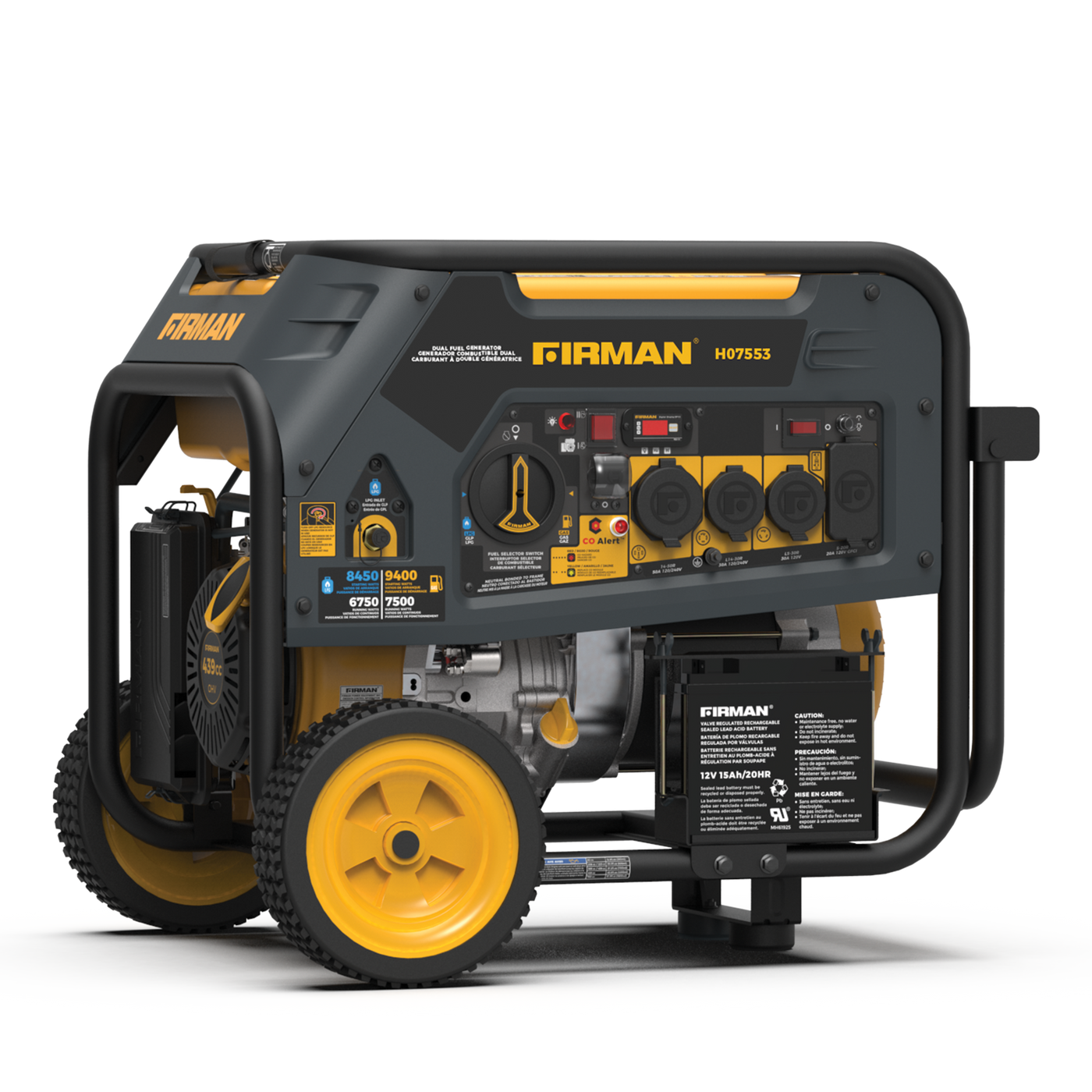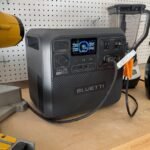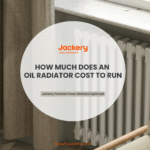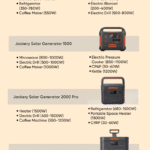Disclosure: This post contains affiliate links and I will be compensated if you make a purchase after clicking through my links. Learn More
A dual fuel generator operates using either gasoline or propane. It switches seamlessly between the two fuel types.
A dual fuel generator offers flexibility and reliability by using two types of fuel: gasoline and propane. This capability ensures that you have power options during emergencies or fuel shortages. Gasoline is often more accessible, while propane burns cleaner and can be stored for longer periods.
Dual fuel generators are ideal for home backup, outdoor activities, and job sites. They provide continuous power by easily switching between fuel sources, depending on availability. This versatility makes them a popular choice for those seeking dependable and efficient power solutions. Additionally, they are designed to be user-friendly, with straightforward controls and maintenance.
Introduction To Dual Fuel Generators
Dual fuel generators are gaining popularity for their flexibility and efficiency. They can run on two different types of fuel. This makes them a practical choice for many.
Definition
A dual fuel generator is a versatile power source. It can operate on both gasoline and propane. This dual capability provides a backup fuel option.
Importance
Dual fuel generators offer several advantages:
- Fuel flexibility: Switch between gasoline and propane.
- Extended runtime: Use both fuels to run longer.
- Cost-efficiency: Choose the cheaper fuel available.
- Environmental benefits: Propane burns cleaner than gasoline.
| Feature | Benefit |
|---|---|
| Fuel Flexibility | Switch between gasoline and propane |
| Extended Runtime | Run longer using both fuels |
| Cost-Efficiency | Choose the cheaper fuel |
| Environmental Benefits | Propane burns cleaner |
Components Of A Dual Fuel Generator
Understanding the components of a dual fuel generator is crucial. These components work together to provide reliable power. Below, we break down the key parts of a dual fuel generator.
Engine
The engine is the heart of the generator. It converts fuel into mechanical energy. The engine can run on both gasoline and propane. This flexibility ensures power availability in different situations. The engine’s design allows for easy switching between fuels.
Fuel System
The fuel system manages fuel delivery to the engine. It includes the fuel tank, fuel lines, and carburetor. The fuel tank stores gasoline or propane. Fuel lines transport the fuel to the engine. The carburetor mixes fuel with air for combustion.
| Component | Function |
|---|---|
| Fuel Tank | Stores gasoline or propane |
| Fuel Lines | Transports fuel to the engine |
| Carburetor | Mixes fuel with air |
These components ensure the generator runs smoothly. They are designed for efficiency and reliability.
Working Principle
The dual fuel generator is a versatile machine. It works on two types of fuel. These fuels are usually gasoline and propane. This flexibility makes it very efficient and reliable.
Combustion Process
The combustion process is the heart of the generator. Both gasoline and propane fuels create energy through combustion. The engine ignites the fuel, which produces a controlled explosion. This explosion generates heat and force. The force moves the engine’s pistons.
Here is a simple breakdown of the combustion process:
- Fuel enters the combustion chamber.
- The spark plug ignites the fuel.
- Fuel burns and creates a small explosion.
- The explosion moves the pistons.
The process repeats many times per second. This keeps the generator running smoothly.
Power Generation
The moving pistons create mechanical energy. This energy is then converted into electrical energy. The generator does this using a component called the alternator.
Here’s how power generation works:
- Pistons move due to combustion.
- Pistons turn the crankshaft.
- Crankshaft spins the rotor in the alternator.
- Alternator generates electricity.
The alternator is crucial in this process. It changes mechanical energy to electricity. The generated electricity can power homes, tools, and other devices.
The dual fuel system allows switching between fuels easily. This ensures continuous power supply, even if one fuel is unavailable. This adaptability makes dual fuel generators highly reliable and efficient.
Credit: blog.ecoflow.com
Fuel Options
Understanding the fuel options of a dual fuel generator can help you make an informed decision. Dual fuel generators offer flexibility and convenience by allowing you to switch between two different types of fuel. This section explores the two primary fuel options: Gasoline and Propane.
Gasoline
Gasoline is a common fuel choice for many generators. It is easily accessible and widely available. You can find it at almost any gas station. Gasoline generators are known for their high power output. They can start quickly and deliver power when needed.
- High energy density: Gasoline offers more power per gallon.
- Easy to find: Available at most gas stations.
- Quick start: Powers up the generator fast.
Despite its advantages, gasoline does have some drawbacks. It is volatile and can be dangerous if not stored properly. Gasoline also has a limited shelf life, which means it can degrade over time. This can lead to starting issues if the generator hasn’t been used for a while.
Propane
Propane is another popular fuel option for dual fuel generators. Propane is stored in tanks, making it a cleaner-burning fuel. It produces fewer emissions compared to gasoline. Propane generators are quieter and often require less maintenance.
- Cleaner burning: Produces fewer emissions.
- Long shelf life: Does not degrade over time.
- Quiet operation: Less noisy than gasoline generators.
One of the main advantages of propane is its long shelf life. You can store propane for an extended period without worrying about it going bad. This makes it ideal for emergency situations. On the downside, propane can be less powerful than gasoline and might require a larger storage space.
| Feature | Gasoline | Propane |
|---|---|---|
| Availability | High | Moderate |
| Power Output | High | Moderate |
| Shelf Life | Short | Long |
| Emissions | Higher | Lower |
| Noise Level | Louder | Quieter |
Choosing between gasoline and propane depends on your needs. Both fuels have their pros and cons. Consider factors like availability, shelf life, and environmental impact when making your decision.
Advantages
Understanding the advantages of a dual fuel generator can help you make an informed decision. These generators offer multiple benefits that make them a smart choice for many applications.
Fuel Efficiency
Dual fuel generators are known for their fuel efficiency. They can switch between two types of fuel, usually gasoline and propane. This helps in conserving fuel and reducing costs. Gasoline is readily available and provides high energy output. Propane burns cleaner and is often cheaper. Switching between these fuels optimizes performance and saves money.
Versatility
The versatility of dual fuel generators makes them highly valuable. They can be used in various situations, from home backup to outdoor activities. This flexibility ensures you have power when and where you need it. Whether camping, tailgating, or during a power outage, a dual fuel generator adapts to your needs. Their ability to run on different fuels also makes them more reliable.
Usage Scenarios
Dual fuel generators are versatile devices that can run on two types of fuel. This makes them suitable for various scenarios, providing reliable power wherever needed. Below are some common usage scenarios for dual fuel generators.
Home Backup
Dual fuel generators are perfect for home backup during power outages. They ensure your essential appliances keep running. You can keep your refrigerator, lights, and even medical equipment powered. This is crucial for families, especially those with children or elderly members. You can switch between gasoline and propane based on availability. This flexibility ensures you are never left in the dark.
Outdoor Activities
These generators are also ideal for outdoor activities like camping and tailgating. You can power your camping stove, lights, and even charge your devices. Propane fuel is easier to carry and store, making it perfect for trips. You can enjoy a hot meal and a well-lit campsite. It’s also great for RVs, offering a reliable power source on the go. This ensures your outdoor adventures are comfortable and enjoyable.
Maintenance Tips
Maintaining a dual fuel generator ensures long-lasting and efficient performance. Regular inspections and proper fuel storage are key. Follow these tips to keep your generator in top shape.
Regular Inspections
Regular inspections help identify issues early. Check the generator’s components frequently. Ensure all connections are tight and secure.
Inspect the fuel lines for leaks or damage. Replace worn-out parts immediately. Clean the air filter regularly to avoid dust buildup.
| Component | Inspection Frequency |
|---|---|
| Fuel Lines | Monthly |
| Air Filter | Every 3 Months |
| Connections | Every 6 Months |
Use a checklist for inspections. This helps ensure nothing gets missed. Proper maintenance prevents unexpected failures and costly repairs.
Fuel Storage
Proper fuel storage is essential for your generator’s health. Store fuel in a cool, dry place. Use approved containers for both gasoline and propane.
- Keep gasoline containers tightly closed.
- Store propane tanks upright in a well-ventilated area.
- Check fuel levels regularly to ensure you have enough for emergencies.
Old fuel can damage the engine. Replace stored gasoline every 6 months. Use fuel stabilizers to extend gasoline life.
Follow these simple fuel storage tips to keep your generator running smoothly. Proper fuel management ensures your generator is ready when you need it most.

Credit: firmanpowerequipment.com
Safety Precautions
Operating a dual fuel generator requires strict safety measures. Proper precautions protect users from harm. This section explains key safety steps.
Proper Ventilation
Generators produce exhaust gases like carbon monoxide. Always use your generator in open areas. Keep it far from windows and doors. This keeps harmful gases away from living spaces.
- Place the generator outside.
- Ensure the area has free airflow.
- Never use a generator in enclosed spaces.
Emergency Procedures
Be ready for unexpected situations. Know how to act during emergencies. Quick responses can save lives.
- Keep a fire extinguisher nearby.
- Have a first-aid kit on hand.
- Know the generator’s manual shut-off switch.
| Emergency Item | Purpose |
|---|---|
| Fire Extinguisher | Put out small fires quickly. |
| First-Aid Kit | Address minor injuries immediately. |
| Shut-Off Switch | Stop the generator during danger. |
Frequently Asked Questions
What Is A Dual Fuel Generator?
A dual fuel generator runs on both gasoline and propane.
How Does A Dual Fuel Generator Switch Fuels?
It switches fuels using a selector switch or valve.
Are Dual Fuel Generators Efficient?
Yes, they offer flexibility and enhanced fuel efficiency.
Why Choose A Dual Fuel Generator?
They provide versatility and reliability in power outages.
Final Words
Understanding how a dual fuel generator works empowers you to make informed decisions. It offers flexibility and reliability. By using both gasoline and propane, you can ensure continuous power. This versatility makes dual fuel generators an excellent choice for many applications.
Invest in one to enhance your power backup strategy effectively.









I have a gasoline generator, I need a dual fuels system. I there a way you can adapt the one I have to work on both fuels?
Yes, you can convert your gasoline generator to run on both gasoline and propane by installing a dual fuel conversion kit. These kits are designed to work with many standard generator models and allow you to switch between fuels easily. The kit usually includes a regulator, carburetor adapter, fuel lines, and fittings.
Before you buy a kit, check your generator’s make and model to ensure compatibility. It’s also important to follow the installation instructions carefully or have it done by a qualified technician. A proper conversion not only expands fuel options but can also improve run-time flexibility in emergencies.